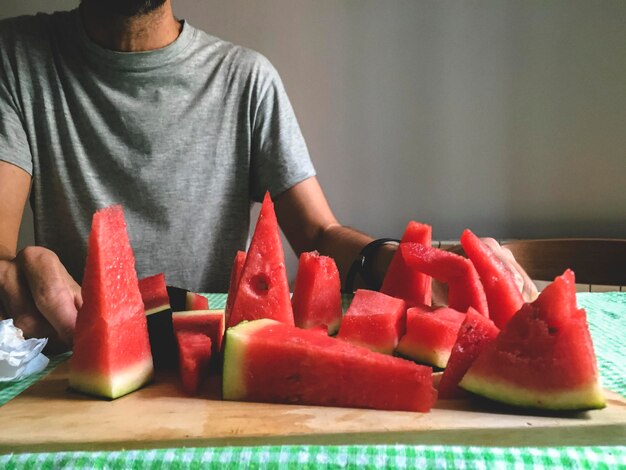Can Diabetics Enjoy Watermelon Safely?
When the heat of summer hits, nothing is quite as refreshing as a slice of juicy, sweet watermelon. But for those managing diabetes, particularly Type 2, a common question arises: Can they safely enjoy watermelon without compromising their health?
Watermelon holds a unique place among fruits. While it is low in calories and hydrating, it also contains natural sugars, which are critical to consider for anyone monitoring their blood glucose levels. The Glycemic Index (GI) is an important factor here. Watermelon has a high GI of around 72, which might initially suggest it's not diabetic-friendly. However, it's crucial to note that its Glycemic Load (GL) is low – about 5 per serving. This essentially means that, when consumed in moderation, watermelon has a minimal impact on blood sugar levels.
Balancing Nutrition and Sugar
Watermelons are packed with vitamins A and C, crucial for eye health and immune function, alongside antioxidants like lycopene, which have been linked to reducing the risk of heart disease. They are high in water content — about 90% — making them excellent for hydration.
For diabetics, the key lies in portion control and balancing watermelon with other low-GI foods. Incorporating watermelon into a fiber-rich meal can help moderate your body's absorption of sugar, minimizing spikes in glucose levels. A slice here and there, integrated into a well-balanced diet, can indeed be part of a healthy lifestyle.
Guidelines for Diabetic Consumption
- Moderate Portions: Limit intake to a small wedge or about one cup of diced watermelon per serving.
- Pair with Protein or Fiber: Combine with nuts, Greek yogurt, or a high-fiber breakfast to help stabilize blood sugar.
- Monitor Blood Sugar: Keep track of how your body responds to watermelon and adjust your intake accordingly.
Considering Financial and Educational Support
Managing diabetes involves dietary vigilance but also financial mindfulness, especially when blood sugar management requires medications or equipment like continuous glucose monitors. Government aid programs and financial assistance can play a transformative role for those burdened with healthcare costs.
Consider these avenues for additional support:
- Medicaid and Medicare: Explore eligibility for coverage on diabetic supplies, care, and medications.
- Supplemental Nutrition Assistance Program (SNAP): Offers assistance for purchasing healthy foods.
- Health Savings Accounts (HSAs): These accounts offer a tax-advantaged way to save and pay for health expenses.
- Educational Grants: Continuing education, such as nutrition classes, can provide further insight into managing diabetes effectively.
Financial and Educational Resources for Diabetics
- 🏥 Medicaid/Medicare: Coverage for diabetic needs
- 🍎 SNAP: Food purchase assistance
- 💸 HSAs: Tax-advantage accounts for medical expenses
- 🎓 Educational Grants: Support for nutrition and diabetes management courses
Ultimately, for those with diabetes, having a balance of nutritional insight and financial resources can make a substantial difference in quality of life. So yes, with strategic dietary planning and support, diabetics can relish watermelon as part of their healthy summer indulgences.
